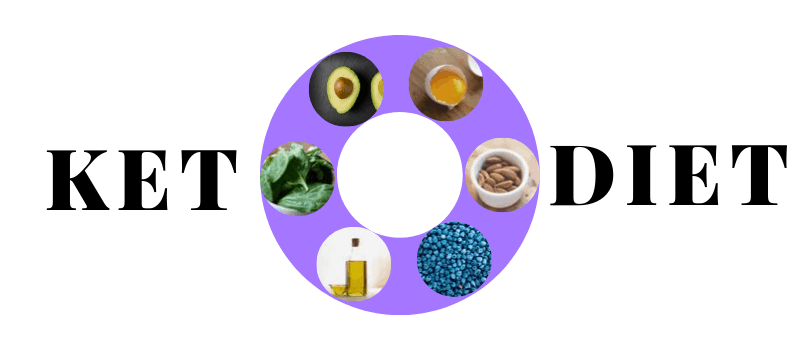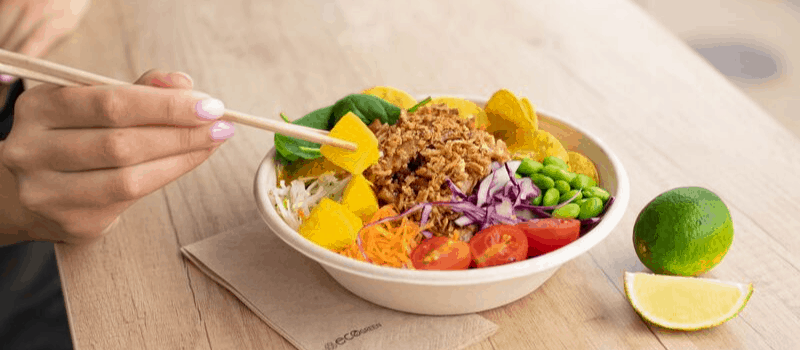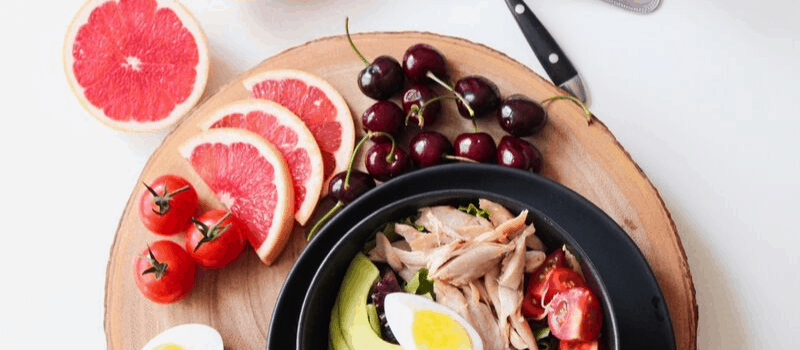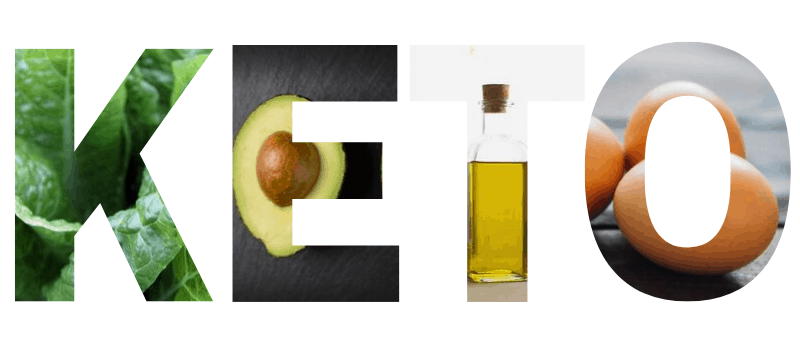Table of Contents
So, what makes the Vegetarian Ketogenic diet so different??
Scientists and medical professionals are always looking for the newest dietary trend or nutritional discovery that redefines what people eat, and even the way they eat it.
It’s a diet plan that’s stuck around. In fact, it has been a part of many cultures and societies since the beginning of civilizations, encouraging people to eat foods that give them the most energy and health benefits.
While traditional ketogenic diets focus on high animal protein intake, a vegetarian ketogenic diet can be accommodated to give you just as much protein and power without having to consume meat. Protein comes from a lot of places, and it’s important to find those places in order to have a successful vegetarian ketogenic diet.
Interested in getting started? Take a look at the perfect vegetarian ketogenic diet plan below to get started on your next nutritional journey.
What Is a Keto Diet?
The catchphrase of the ketogenic diet is “low in carbs, high in fat. The goal of embarking on a ketogenic diet is to give your body a boost of health benefits while losing weight and becoming more fit in the process.
Many medical, nutritional, and biological professionals have backed the scientific success of the ketogenic diet, claiming an increase in fitness ? and a decrease in disease.?
But it’s hard to jump on the bandwagon of what could be just another diet fad without seeing the facts. Fortunately, there’s ample evidence to support the success of this low carb, high fat diet across the globe.
Some of the most recent studies have been published in journals such as The Journal of Pediatrics, The Journal of Clinical Endocrinology & Metabolism, and the Journal of the American Dietetic Association, according to Healthline.
These studies dive deep into the nutritional and physical aspects of the ketogenic diet to show that a balance of fat and nutrients can encourage your body to get healthy in a natural way.
The ketogenic diet is one that seems like it will be around to stay, becoming a staple diet much like vegetarianism.
The vegetarian diet is practiced by many people for biological, cultural, or religious reasons, and many people enjoy being vegetarian for the benefits it provides. It’s not difficult to ensure that your body is receiving a well-balanced nutrition while avoiding meat and animal flesh.
The same can be said when combining these two super-powered diets into one. The vegetarian ketogenic diet is unique in its own way as it offers all of the benefits of a regular ketogenic diet, but of course without meat consumption.
So, how exactly can it be done?
How can a high fat diet be done in a healthy way without the added fats of beef, pork, or fish?
It’s not hard to balance these two diets out well. But first, it’s important to understand exactly why people choose this kind of diet to begin with.

Why Do People Choose the Ketogenic Diet?
For those who choose a ketogenic diet, they are largely pursuing this kind of nutritional balance for one reason: to put themselves into ketosis.
This is a bodily state that changes the rate of your metabolic production, making you burn off fat at a much higher and more productive rate. The lover uses this renewed energy to supply more power to the brain through chemicals called ketones.
All in all, it’s a win for pretty much every part of your body, inside and out.
One of the biggest reasons people choose to embark on a ketogenic diet is because it can reduce blood sugar levels, as well as insulin.
This means that a ketogenic diet has the very real opportunity to reverse a diabetes diagnosis altogether.
This is just one of the many health benefits this diet provides.
Other health benefits include:
Lowering your risk factor for almost any kind of metabolic, respiratory, or gastrointestinal disease
Establishing healthy and Pepsi five weight loss
Treating several types of cancer
Aiding in the recovery from a brain injury
Reducing symptoms of epilepsy and Parkinson’s disease
Not only do you benefit from these amazing health improvements, but your overall way of life will feel better as well. Getting into the habit of being healthy amplifies your focus, boosts your energy, and inspires brain activity.
There are several different types of ketogenic diets that individuals choose to structure their diets around.
The most popular is the Standard Ketogenic Diet (SKD), which can help you understand the basics of low carbs, high fat, and moderate protein.
The next is the Cyclical Ketogenic Diet (CKD), which actually encourages short periods of high carb consumption to set your body on a “cycle” of ketosis.
This may work out well, but it is recommended to speak with a nutritionist to decide if this diet is right for you.
There is also a high-protein type of ketogenic diet that is really only encouraged for bodybuilders and fitness enthusiasts. This type of ketogenic diet may be the most difficult to achieve while you are vegetarian, but it is definitely possible.
Just be mindful of how much protein you’re co summing with the produce you have available, and how much you must consume in order to successfully uphold this diet in a healthy way.
Adding Vegetarianism into the Mix

Becoming vegetarian may be something that you are just now exploring. Or, perhaps you’ve been a vegetarian for many many years, and you are wanting to start a vegetarian ketogenic diet plan to get healthy and lower your risks for disease.
Where’s the best place to start?
What is the most successful way to balance this diet out for your better health and well-being?
First, it’s important to understand which products belong in which food groups. Growing up, many people in many societies are told that products such as chicken and beef are good for your body and are essential for a well-balanced diet.
However, we have come to know that this is simply not true. Protein is at the height of the omnivore vs. vegetarian debate, and how to get the highest amounts of protein possible is always a discussion.
What’s great is that high protein can come from a lot of non-meat areas. Some of the food items with the highest amounts of protein on the planet include:
Eggs
Yogurt
Milk & Cheese
Nuts
Beans & Legumes
Green Vegetables
Basic Must-Haves of A Vegetarian Ketogenic Diet
Vegetarians naturally eat more carbohydrates than those who do include meat in their diets, so it’s going to take some work to understand which carbs you can keep, and which ones need to be cut. Knowing which carbs are good for you, versus the kind that are actually harmful to your body, can provide a lot more clarity when determining how your vegetarian ketogenic diet plan will work best for you. Coming up with a vegetarian keto food list is the first step.

The Basics of Carbs
You may be under the belief that all carbs from vegetables are good. While they essentially are healthy, you can’t go overboard with them during a keto diet. Remember that low, low carbohydrate count is the goal.
Which food items have high carbohydrates? Well, everything with high glycemic counts, or foods that have been manually processed, contain unhealthy carbs which can damage all of your body’s systems. These include items such as bread, pasta, cereals, and items made with a lot of wheat flour.
It’s a good idea to cut these kinds of carbs out altogether. Remember that the amount of carbs you’re allowed to consume every day on a keto diet are small and precious, so use it wisely. Here are some examples of healthy carbs:
Spinach
Kale
Lettuce
Asparagus
Onion
Bellpepper
Garlic
Cucumber
Green Beans
Most green and leafy vegetables are highly healthy for you, and can be consumed in hefty quantities while still abiding by the rules of the keto diet. These are great places to start when venturing on a vegetarian ketogenic experience.
But wait! Vegetables and bread aren’t the only food items that can be packed with carbs. What else should you be on the lookout for?
Fruit :
Fruit needs to be eaten in small quantities as it is, but certain types have much more carbs than others. Some fruits you need to avoid include:
Bananas
Apples
Citrus fruits
Peaches
Plums
The only fruits that can be enjoyed freely include berries. Blueberries are the healthiest, but raspberries and strawberries are good as well. But make sure not to have too much sugar!
The Basics of Protein
The biggest point of contention between a normal ketogenic diet and a vegetarian ketogenic diet is where the high amounts of protein can come from. Clearly there are many vegetarian protein options, but that doesn’t mean they are all free to consume on keto.
Always be aware of the carbohydrates that you’re consuming; otherwise you won’t have much success on this kind of diet.
The most protein-rich and carbohydrate-lacking protein options include:
- Dairy
- Eggs
- Miso
- Tempeh
- Seeds and nuts
Why isn’t soy listed on there?
Soy is a great meat substitute, but many types of soy are too high in carbohydrates or contain other unhealthy nutrients that can’t be consumed during a keto diet. If you do get some soy, make sure it is GMO-free and fermented to avoid any toxic products.
By sticking to these high-protein products, you are promising your body that you will receive as much protein as is needed to work on your ketogenic diet successfully.
The Basics of Fat
It bears repeating that a ketogenic diet - any ketogenic diet - is only successful when the diet is both low in carbs and high in fat. But there is such a thing as good fat.
Fat doesn’t just have to be composed of the products that make you gain weight, such as fast food burgers or greasy bags of chips. In fact, a lot of organic products contain exactly the kinds of fats that you need to be able to put your body into ketosis.
Saturated fats are those that are man-made, and are generally very bad for your body. This is because it is chemically constructed to add weight and mass to you in unhealthy ways. Unsaturated fats, on the other hand, are natural fats that can add energy and supply to your body.
The best unsaturated fats for a vegetarian diet are:
- Avocados
- Canola oil
- Olive oil
- Peanuts
- Walnuts
- Cashews
- Hazelnuts
- Macadamia nuts
Fortunately, most of these items are those that you’ll already want to be eating due to their low carb and high protein amount. But beware of consuming too much, and always be measuring the carbohydrates you put into your body.
Healthy fats that are good for your body are good for your body because they store and use the energy in a productive way. Some types of healthy fats can even lower your risk of heart disease or heart failure. Other fats keep your digestive tract regular, while others will strengthen your nails and hair.
The higher the fat, the better your body will work. But mix that with carbohydrates and sugar, and you will be putting more bad into your body than good. A good rule of thumb is that if the product is sold in a convenience store at a gas station, then it probably isn’t good for you.
Sample Vegetarian Ketogenic Diet
The more you practice, the better you’ll become. This is true with anything you set your mind to, and the vegetarian ketogenic diet is one of them. A day in the life of this habit can be reflected through a sample vegetarian ketogenic diet. On average, the structure of the diet can be laid out here:

Breakfast
Usually, it’s good to eat a lot of protein for breakfast, so you can gain a lot of energy for the rest of your day. Start out with some eggs, maybe cooked with olive oil for that extra bit of good fat. Don’t make toast or bread, though, as that will increase your carb intake.
For more protein and fats, add some chia seeds. Throw in a few blueberries if you need to satisfy that sweet tooth.
Snack
Keto diet is all about the right amount of consumption, so you don’t typically need to stick with a regular three-meals-a-day schedule. It’s important to always ensure that your body has the right amount of protein and fats, so refuel often.
The best vegetarian keto snacks are cottage cheese, cucumbers or bell peppers, cream cheese and salsa, or sunflower seeds.
Lunch
Usually people look for quick and easy, yet substantially filling, foods for lunch. This is because most people are at their office during the day and spend their lunchtimes with things they’ve prepared at home.
Grocery shopping is essential for a successful keto diet, so you might want to start preparing healthy items such as salads with avocado, egg omelets, with green vegetables, or goat cheese and seeds to fill you up.
Dinner
For many people, dinner is the largest and often the most meaningful meal of the day. Dinner isn’t typically eaten alone, and can be spent in enjoyable company. It’s exciting to make a big deal out of dinner, so these dishes should be the most creative and delightful. Many who are already on keto diets enjoy pasta from zucchini noodles with pesto, or perhaps grilled tempeh over a bed of roast veggies and cubed cheese. Feel free to add in lots of nuts, seeds, and oils to enhance the flavor and give your body the fuel it needs.
Dessert
Surprisingly, you aren’t too limited on dessert. Just be careful not to eat anything with saturated fats or high carbohydrates. Vegan ice cream, a small fruit bowl, or a yogurt parfait are some popular favorites.
Your Vegetarian Ketogenic Shopping List
Outlined below is a list of some top-recommended vegetables, fruits, nuts, seeds, carbohydrates, fats, and proteins that will help you round out the perfect vegetarian ketogenic diet. Keep in mind that this is only the beginning, and you may find other products that will help you succeed in your keto diet.
Vegetables
- Collard Greens
- Spinach
- Kale
- Lettuce
- Bellpeppers
- Onions
- Swiss Chard
- Asparagus
- Green Beans
- Cucumber
- Squash
- Mushroom
- Tomato
- Eggplant
- Garlic
Fruits
- Raspberries
- Strawberries
- Blackberries
- Blueberries
- Avocado
Nuts and Seeds
- Chia Seeds
- Flax Seeds
- Sunflower Seeds
- Walnuts
- Pecans
- Macadamia Nuts
- Cashews
Carbohydrate (Keep it low)
- Peanuts
- Pistachios
- Apples
- Legumes
- Oatmeal
Fats
- Avocado Oil
- Canola Oil
- Olive Oil
- Coconut Oil
- Olives
Proteins
- Eggs
- Milk
- Yogurt
- Miso
- Tempeh
- Natto
- Tofu (Only non-GMO fermented soy)
- Broccoli
If you are ever concerned about whether or not a food item has the correct amount of carbs, protein, or fats, you can always look up its chemical components online. And, when in doubt, consult this list - you don’t need to stray too far away from it!
Tips to Staying On Track With Your Diet
One of the most efficient ways to stay on track with your vegetarian ketogenic diet and to not lose the habit is to set reasonable goals.
This will help you reach something that is attainable, while encouraging you to push yourself every day to stick to this life-changing nutrition plan. For some individuals, the goal is to reduce the symptoms of diabetes and perhaps eliminate it altogether. Others aim to be more heart-healthy.
Some just want to detoxify their body and get fit and healthy in a natural way. Regardless of the goal, it’s important that you stick to it.
Also study your carbs. There are many vegetables that are high in carbohydrates, such as carrots and potatoes.❌Just because they are vegetables doesn’t mean they are necessarily good for you, especially when you’re trying to go into ketosis.
Stay away from carb-rich products.☠️Stick with lean proteins and fats that will help you make the most out of your energy production.
The diet alone can work wonders.
However, there is a little more to it if you wish to truly tune up your body. To really put the efforts of your vegetarian ketogenic diet into effect, you need to exercise. ?
Getting a healthy amount of physical activity will spur your metabolism, helping it to really absorb and produce new types of energy. The ketogenic diet gives your body only the best in fats and protein, without any of those harmful carbohydrates to keep you down. It will do wonders for your body as long as you stick to your goals!
Start Your Ketogenic Journey Today!
The steps to getting started with a vegetarian ketogenic diet aren’t difficult, especially if you are already used to researching nutritional information about the foods you consume.
Remember that everything belongs in its food group, even if it’s high in carbohydrates and sugar. Get to know your body and your nutritional needs better by investing in this supercharged, medically-approved nutrition plan that will boost your energy to new heights and help you drop weight like never before.
It may seem like a difficult journey at first, but once you get through the biggest hurdles, it will all be easy sailing from there. It is primarily essential for you to keep up an acceptable amount of protein intake at all times.
Staying on track with the protein may prove to be more difficult than staying on track with the high fats and low carbs. This is because while some foods have protein aplenty, your body goes through it fast. It’s a direct line to energy, and without it, we won’t be able to function very well. Always stock up on the high protein (but low carbohydrate) foods on your vegetarian keto diet food list. In time, the process will be like second nature.
You’re well on your way to changing your health and nutrition for the better. Stay on track with your goals, and you’ll be feeling the benefits in no time.